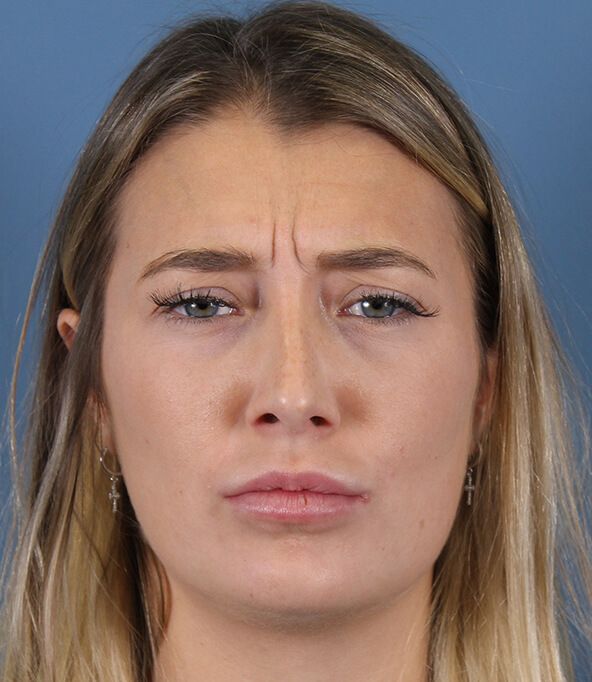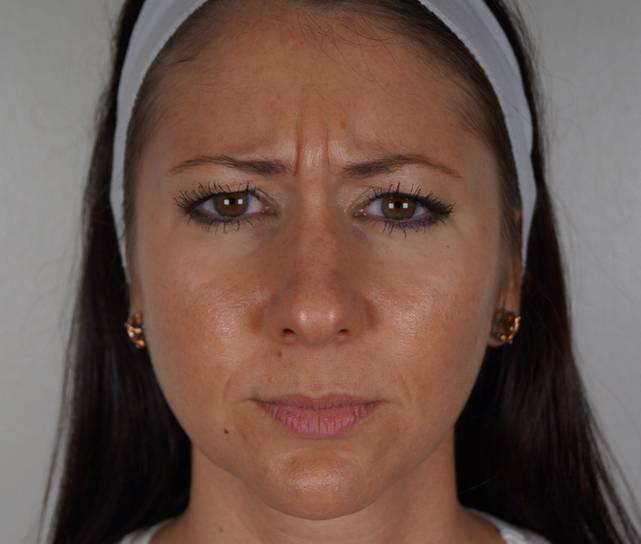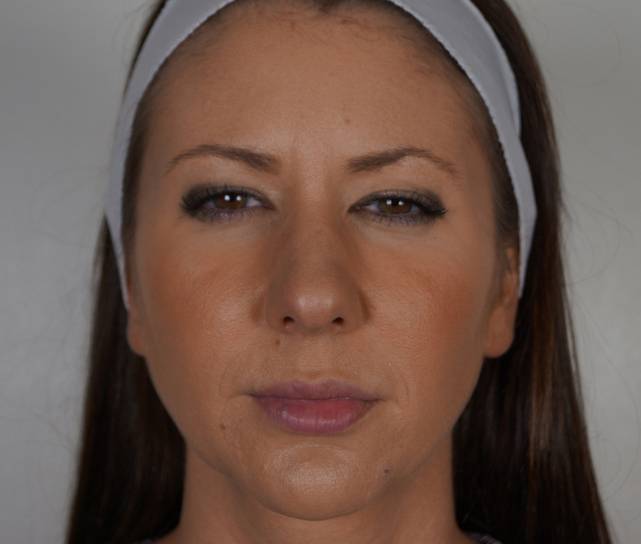Botox Vs. Dysport: What’s The Difference?

Originally published on 9/17/2006, updated on 2/11/2021 to include recent studies
Botox and Dysport are both neuromodulators or neurotoxins (forms of botulinum toxin type A) that have been approved by the FDA for minimizing fine lines and wrinkles. The minimally-invasive injectables are equally safe, and both work via the same mechanism. Both are neuromodulators temporarily paralyze muscles of the face, which reduces wrinkles and smooths skin.
While both products are used for the same indications and are chemically similar, there are a few key differences between the two. These differences are so great that its important for patients to understand that these products are not interchangeable.
In this post we will compare Botox vs. Dysport to look at their similarities and differences, as well as provide guidance on which neuromodulator is may be best for your specific needs.
About Botox
Botox works the same way Dysport does. The naturally derived toxin blocks nerve signals to your muscles, which results in a more relaxed and softer-looking face. Botox is exclusive to the US market, while Dysport was used in Europe long before it received FDA approval.
Botox injections take place in your doctor’s office and require little to no downtime. Your doctor may first apply a topical anesthetic to reduce injection-site pain. Botox is more frequently used to treat small areas or fine lines. The number of units needed depends upon the area to be treated and the severity of the wrinkles.
The results of Botox may take longer to appear, but Botox also tends to last longer, up to 6 months. Still a temporary solution for wrinkles, however, repeated injections are required to maintain results.
Before and After Botox
About Dysport
Dysport is a neuromodulator which, like Botox, is derived from the botulinum toxin. It works by temporarily paralyzing muscles. When your muscles relax, wrinkles that are formed by repeated muscular contractions are minimized.
Dysport is injected under the skin to treat moderate to severe wrinkles. It’s not typically used for fine lines. The 11 lines between the eyebrows are commonly the face’s deepest wrinkles, which is why Dysport is frequently used to treat this area.
Dysport, like Botox, is a temporary solution for wrinkles. Results last from 3-4 months, at which point you’ll need a follow-up injection to maintain your smooth look.
Before and After Dysport
Botox vs. Dysport: The Main Differences
The difference between Botox and Dysport comes down to varying formula characteristics:
Dosage: There is one important difference between Botox and Dysport: they are dosed differently. It takes three units of Dysport to equal the muscle relaxing strength of one unit of Botox. This distinction is very important, 50 units of Botox does not equal 50 units of Dysport. Please see a licensed injector for proper dosage.
Dilution: Dysport is diluted differently than botox. So if a patient is used to a certain number of Botox units for a treatment they will likely need to increase the number of units when switching to Dysport (or vice versa). However, greater dilution does not mean that Dysport is less effective than Botox. It just means that a higher quantity of Dysport is needed to achieve the same level of result. For clinics that price the products by the unit, you will find that that price per unit of Dysport is typically much lower than the price per unit of Botox, but to get a similar treatment result the final cost may be about the same.
Molecule size: The Dysport formula contains smaller molecules compared to Botox, which may be beneficial. Smaller molecules enable Dysport to work faster than Botox and a larger area of spreading. In some areas this is beneficial and in some areas this is not. That is why it is very important to go to a provider who has lots of experience and expertise in proper dosing and placement of your neurotoxin.
Diffusion: Dysport tends to diffuse more than Botox, causing it to spread to a broader area after it’s injected. This means a larger treatment area can be addressed in fewer injections, which can be beneficial when addressing larger treatment areas. However, this diffusion means Dysport is less effective in treating smaller areas where more precision is needed or areas with thicker muscles.
Onset: Compared to Botox, Dysport has the quickest “onset” of action; typically requiring 24 hours for all results to be realized. Botox can take up to 72 hours for results to fully establish.
Is Botox Better Than Dysport In Certain Facial Areas?
When Botox is injected, it stays put in the injection area. This makes Botox a premiere option for treating smaller, more targeted areas around the lips and eyes. Dysport, on the other hand, diffuses into larger areas after being injected, meaning it spreads further away from the injection site. This makes Dysport ideal for treating larger areas, like the forehead, as fewer injections are needed to address a larger treatment area.
Here’s which neurotoxin is best for addressing common facial areas:
Wrinkles Around the Eyes
Common wrinkles around the eyes include 11 lines, the two parallel lines that form between the eyebrows and crow’s feet. 11 lines are best treated by Dysport, which is typically reserved for deeper wrinkles. Crow’s feet are more often treated by Botox, which avoids any ‘drift’ of the toxin toward the eyes.
Forehead Lines
Forehead lines are the horizontal lines that extend across the forehead. These are best treated by Dysport, which is recommended for larger areas. Dysport more easily spreads from the injection site, thus treating your lines with fewer injections.
Lip Lines
Lip lines are the vertical wrinkles above the lip, also known as smoker’s lines. Lip lines require an advanced, precise injection technique. This makes Botox the better choice, since the neurotoxin will stay put in the small area into which it was injected.
Medical Applications
Both Dysport and Botox are sometimes used to treat muscle spasms, sweat gland disorders, migraines or TMJ. Their primary use, however, continues to be the cosmetic prevention and treatment of wrinkles.
Similarities Between Botox & Dysport
Over time, fine lines and wrinkles naturally develop in areas of the face due to repetitious muscle contractions from normal everyday facial movements or expressions. For example, smiling and squinting create ‘crow’s feet’ around the eyes, while raising your eyebrows results in forehead lines.
Both Botox and Dysport address fine lines and wrinkles by relaxing muscle tissue to the point where they prevent the muscle from contracting. When either product is injected into a targeted muscle area the nerve impulses that control muscle contraction are temporarily blocked. The resulting decrease in movement and relaxation of muscles reduces the appearance of wrinkles in the area.
The results of both Botox and Dysport are temporary. After a period of time nerve impulses begin to reach the targeted muscle area again, resulting in both muscle contractions and the reappearance of wrinkles and lines. However, an experienced injector can maintain the positive results of neurotoxins with regular treatment sessions approximately every 3-6 months.
Is There a Difference in Results?
Botox and Dysport work similarly and have the capacity to provide similar results. One big difference between these neurotoxins is results onset, that is how soon results are visible. With Dysport, patients may begin to notice results in as little as 24 hours after treatment. With Botox, final results may not be noticeable until 72 hours or longer after your injections.
Depending on your treatment, the amount of neuromodulator needed will also differ. Dysport injections come in smaller units. One unit of Botox is equal to three units of Dysport. This does not mean you’ll pay double for Botox. Both drugs are similarly priced, as one unit of Dysport costs about 1/3 of a unit of Botox. The amount you’ll need depends primarily on your specific cosmetic concern.
Does Botox Last Longer Than Dysport?
The results of Botox typically last between three to six months from injection. In contrast, Dysport typically lasts for about four months. Result duration can vary from patient to patient as many variables like treatment location, muscle size, and patient metabolism can play a role
It’s important for patients to know that they can extend the results of either Botox or Dysport by undergoing periodic maintenance treatment sessions. It’s also true that after about a year of undergoing Botox or Dysport treatments, many patients can go longer between treatment sessions as it takes far less effort (dosage) for the targeted muscles to relax.
Is One Safer Than The Other?
Botox and Dysport are both safe when used as intended. The most common side effects include redness, minor swelling, or itching at the injection site. Droopy eyelids or muscle spasms are rare, moderate side-effects.
Even more rare is botulinum toxin poisoning. This can occur in those who have an allergic reaction to the drug, or in those who receive too many injections within a short time frame. If you experience shortness of breath or difficulty speaking or swallowing after your treatment, contact your doctor immediately. Side effects are minimized when you visit a board-certified doctor for treatment.
Is Dysport Cheaper Than Botox?
When strictly looking at price per unit, Dysport is cheaper than Botox. However, the disparity is deceiving as it takes three (3) units of Dysport to provide the same muscle relaxing power as a single (1) unite of Botox. So on a strictly price per unit basis, Dysport can appear pretty cheap (say $5 per unit) compared to Botox at $15 per unit. However, the total procedure cost will even out as it takes three Dysport units to be equivalent to one Botox unit.
During an in-person consultation, patients should ask their injector how pricing would differ given the specific results they desire.
Studies: Which Is Better?
In the Botox versus Dysport debate, there have been patient reviews supporting the superiority of both products. However, these are only personal reports with no scientific proof supporting the claim.
To date the only study focused on the cosmetic differences between Botox and Dysport was undertaken in 2011 (note the study was funded by Dysport’s parent company Medicis Aesthetics). Subjects of the study were injected with Botox on one side of their face and Dysport on the other side. The study showed a notable difference in wrinkles after 30 days, with the Dysport side having fewer wrinkles when the subjects smiled. One problem with this study is that there isn’t one clinically accepted conversion ratio used to compare the thinner, more diluted Dysport to the thicker, more concentrated Botox. This uncertainty led Allergan (Botox’s parent company) to conclude that researchers simply used more Dysport than Botox, which is highly probable.
Conclusion
In the end, the choice between Botox and Dysport may come down to simple preference of both the injector and the patient. At times, skilled injectors may even use both products concurrently during a single treatment session to most effectively produce a patients’ desired result.
More Botox vs. Dysport Comparison Resources
- RealSelf Q&A Thread – Botox vs. Dysport
- Botox vs. Dysport study (2007)
- Botox & Dysport Efficacy Study (2013)
 Before
Before  After
After  Before
Before  After
After 
Great post, I was wondering what the difference between Botox and the other options are. Is this more or less the same for Xeomin?
Hi Carly, thanks for reading our post! You are correct, Xeomin is another neurotoxin that can treat similar issues as Botox and Dysport. You can learn more about Xeomin here: https://www.westlakedermatology.com/cosmetic-procedures/injectables/xeomin/
So depending on the specific patient (their natural facial characteristics and desired result) a skilled injector will determine which treatment (or combination of treatments) will be most effective.
Thanks again,
WD Staff
I don’t understand how botox differs from fillers like juvederm. Can you explain more on that?
Hi Leena, thanks for sending your question. Basically the difference between Botox (and other neuromodulators) and fillers is the way they address wrinkles. Botox works to relax the underlying muscle while fillers work by filling creases and plumping the skin. The best choice of treatment can depend on several factors including which facial area is treated and the characteristics of the patient. For more information, please feel free to give us a call!
So is Dysport cheaper?
Hi Kelsey, thanks for reading our post and for you question! Dysport is typically less expensive than Botox on a quantity basis. However, the final difference of cost could depend upon characteristics of the patient and the treatment area (muscle size and strength). Additionally, we caution prospective patients about focusing too much on price: choosing the right product to achieve the desired result should be the most important consideration!
I am a regular Botox patient. It works extremely well in my forehead, so I decided to try it around my eyes to help with the crow’s feet. My provider used 15 units, and split that up around each eye. I’m not seeing the results that I had hoped for. Should my provider have used a higher dose? 15 units didn’t seem like very much. Are any of the other treatments discussed in the above Q and A more effective in the eye area?
Hi Alice, thanks for reading our blog and submitting your comment. We are sorry to hear about your experience. Typically Botox has a higher potency per volume compared to Dysport; so if you were to do the same area with Dysport you would be looking at a higher quantity to achieve the same level of effectiveness.
That being said, each individual and treatment area (facial muscle) responds differently to Botox. If the 15-unit treatment did not achieve the results you were after you may have to discuss a higher dosage with your provider.
Thanks again,
WD Staff
I would encourage people to give Dysport a try. I was hesitant as I’ve always done Botox but got some good results from switching to Dysport (and will continue to use)!!
I’m 30 years old, and just started seeing those smile lines, it’s enough to bother me. I have a pretty petite face, how many injections would I need? I did my lips with one injection, and their perfectly plumped.
Hi Alina, thanks for reading our post and for submitting your question!
It’s always very difficult to provide an accurate answer without assessing the patient in person. Would you be interested in coming in for an in-person consultation?
Thanks,
Adam
Thanks for sharing this blog with us!
Great info on this post. So Dysport is basically “generic” Botox. That makes sense!
Dysport is a great treatment option, you don’t always have to pay more for a name brand. Its just as effective
What is the best for nasal fold’s?
Hi Kimberly,
Great question! For the nasolabial folds we typically see great results with Dysport. Although the preference of the injector and characteristics of the muscle also play a role in which is best. As always, its best to see a skilled injector for an in-person consultation!
Thanks,
WD Staff
Hello. How likely are you to get scar tissue and make the lines worse over time?
Also I’m thinking of getting. Restalyane in my under eyes but I’m concerned about scar tissue. What are your thoughts on that?
Hi Melissa,
Great question! Scarring is unlikely especially if the filler is properly administered (not over filled) by an experienced injector and not over used. However, you should diffidently discuss these concerns further with your injector prior to treatment. Especially if you have a history of scarring.
We hope that helps!
Thanks,
WD Staff